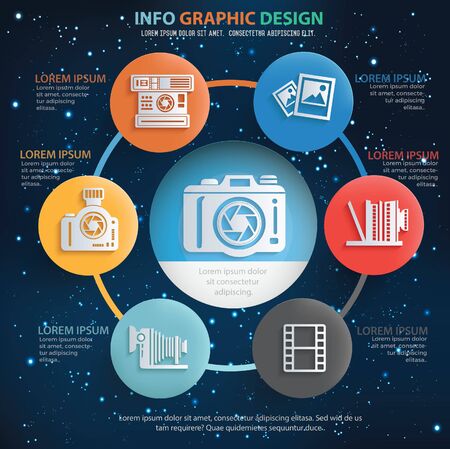Digital Photography Tips For Beginners: Understanding Your Video Camera In No Time At All
Digital Photography Tips For Beginners: Understanding Your Video Camera In No Time At All
Blog Article
Material By-Weber Didriksen
When you initially pick up your cam, it can feel frustrating with all the settings and options offered. You may find yourself questioning just how to navigate aperture, shutter speed, and ISO efficiently. Understanding these basics is important, yet there's more to photography than simply technical knowledge. Comprehending make-up techniques and illumination problems can raise your pictures substantially. So, what happens if you could discover basic techniques to improve your abilities and begin recording excellent pictures quicker than you believe? Allow's explore exactly how to change your digital photography journey.
Recognizing Video Camera Setups
Recognizing your camera setups is critical for catching stunning pictures. When you get your camera, familiarize on your own with the three primary setups: aperture, shutter speed, and ISO. https://telegra.ph/Professional-Photographers-Typically-Ignore-Crucial-Basics-That-Can-Hinder-Their-Development-Discover-Vital-Ideas-To-Elevate-You-01-07 plays an essential role in just how your images turn out.
Beginning with aperture, which regulates the quantity of light going into the lens. https://postheaven.net/erichrayford/innovative-ways-to-market-your-photography-solutions (reduced f-number) allows a lot more light and creates a beautiful background blur, excellent for portraits. Conversely, a narrower aperture (higher f-number) keeps more of the scene in emphasis, perfect for landscapes.
Next, focus on shutter rate. https://www.slrlounge.com/mixing-flash-natural-light-photography-tips-with-miguel-quiles/ determines how much time your cam's sensing unit is subjected to light. A rapid shutter speed freezes motion, which is wonderful for activity shots, while a slow shutter speed can develop stunning effects like smooth water in landscapes.
Lastly, readjust your ISO. This setup impacts your electronic camera's sensitivity to light. A greater ISO serves in low-light situations but can introduce sound or grain. Go for the most affordable ISO feasible while still accomplishing correct direct exposure.
Structure Methods
When you're out capturing, make-up can make all the difference in just how your images resonate with customers. Begin by using the rule of thirds; picture your frame separated into 9 equal areas with two horizontal and two upright lines. Placement key elements along these lines or at their intersections to create equilibrium and interest.
Next, think about leading lines. These natural lines in your scene, like roadways or rivers, attract the visitor's eye right into the photograph, leading them through the tale you're telling.
Do not forget about framing; usage components within your scene, like trees or windows, to produce a frame around your subject, adding deepness and emphasis.
Likewise, keep an eye on your background. A chaotic background can sidetrack from your major topic, while a simple one assists it stand apart.
Finally, explore https://zenwriting.net/val09curt/innovative-digital-photography-concepts-releasing-your-creativity and patterns; they can create a striking photo that catches focus.
Mastering Lighting Conditions
Understanding lighting problems is vital for catching spectacular photographs, as the right light can transform an average scene into something phenomenal.
Beginning by observing natural light at different times of the day. Mornings and late afternoons supply the most effective light, referred to as the gold hour. The soft, warm tones during these times can enhance your images wonderfully.
Don't avoid overcast days either; diffused light can decrease extreme darkness and develop a pleasing impact, especially for pictures.
Explore backlighting by placing your subject against the light source. This strategy can develop a wonderful halo effect and include deepness to your images.
Pay attention to your camera settings as well. Change the ISO, aperture, and shutter rate to fit the illumination conditions. A greater ISO can aid in reduced light, but be cautious of grain.
Make use of a tripod in darker settings to stay clear of blur.
Lastly, don't forget man-made lighting. Flash and continual lights can be excellent tools for regulating light in tough problems.
Conclusion
Finally, mastering your cam doesn't have to be overwhelming. By understanding your setups, using structure strategies, and using the power of all-natural light, you'll rapidly raise your digital photography skills. Keep in mind, exercise makes perfect, so get out there and explore your newly found understanding. With time and devotion, you'll be capturing spectacular images that show your distinct point of view. Enjoy the trip, and do not fail to remember to have a good time while you're at it!
